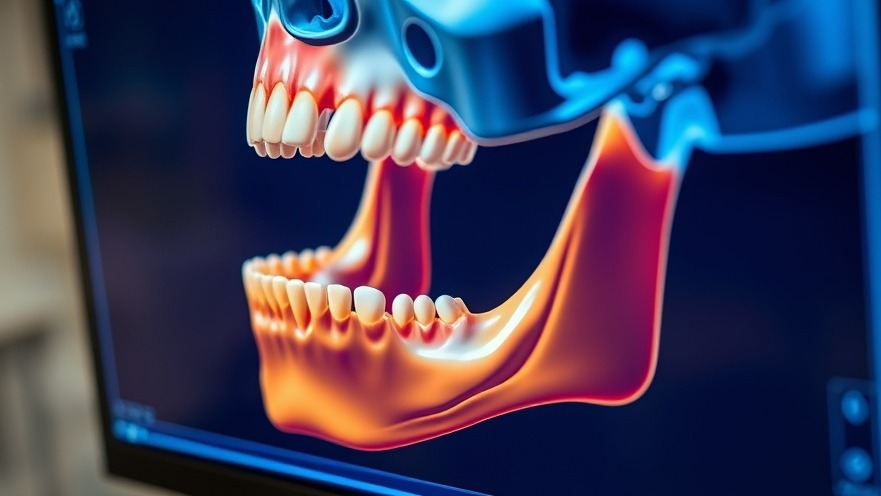
Revolutionizing Jaw Reconstruction: The Game-Changer for Patients
For patients undergoing jaw reconstruction following head and neck cancer surgery, the advent of computer-aided design and manufacturing techniques, commonly referred to as CAD/CAM, marks a turning point in clinical outcomes. Research published in Plastic and Reconstructive Surgery highlights how these innovative techniques offer tangible benefits, especially in free fibula reconstruction procedures.
What is CAD/CAM and How Does it Work?
CAD/CAM technology employs advanced digital tools to facilitate preoperative planning and manufacturing of individualized surgical guides and hardware. Surgeons can design custom plans for each patient's jaw reconstruction, significantly improving accuracy and efficiency during the surgical procedure. These tailored solutions allow for the creation of three-dimensionally printed guides that fit the patient's anatomy precisely, thereby enhancing surgical outcomes.
Clinical Insights: A Deep Dive into the Research
Mario G. Solari, MD, a renowned member of the American Society of Plastic Surgeons at the University of Pittsburgh, emphasizes the importance of these advancements. His study, which included 215 patients who underwent lower jaw reconstruction, compared CAD/CAM-assisted procedures to conventional techniques. The results were telling: patients receiving CAD/CAM-assisted reconstruction spent approximately one hour less in the operating room.
Progressive Clinical Outcomes: A Closer Look
While both treatment groups exhibited similar rates of short-term complications such as major bleeding and infection, a notable difference emerged in wound dehiscence rates. CAD/CAM patients experienced significant improvement, with a dehiscence rate of just 7.4%, compared to 16.5% in the conventional group. Essentially, this means a lower risk of reopening surgical sites, which can lead to prolonged recovery and additional procedures.
The Advantages of Efficiency: A Compelling Case for CAD/CAM
The efficiency brought about by CAD/CAM extends beyond reduced time in the operating room. With precise preoperative planning, surgeons can minimize the overall surgical burden on patients, potentially translating to shorter recovery times and lower healthcare costs. Furthermore, understanding the innovations and efficiencies provided by such technologies allows health practitioners to better inform patients about their options, contributing to more patient-centered care.
Future Trends in Surgical Technology: What to Expect
Looking ahead, it's clear that CAD/CAM technology is setting a precedent for how surgeries will be approached in the future. As its capabilities evolve, we can expect to see more personalized treatment methodologies across various surgical fields, not just in jaw reconstruction. The integration of these technologies paves the way for a future where surgical outcomes are not just improved but optimized.
Common Misconceptions: Understanding CAD/CAM
Despite the clear benefits, some practitioners remain skeptical about adopting CAD/CAM technologies. A common misconception is the fear that incorporating advanced technology may complicate the surgical process rather than simplify it. However, as shown by the recent research outcomes, CAD/CAM facilitates precision rather than confusion—a critical point for surgeons considering upgrading their methodologies.
Empowering Healthcare Providers: Benefits of Staying Informed
For concierge health practitioners, staying abreast of the latest advancements like CAD/CAM can be transformative for patient care. By understanding these technologies' potentials, healthcare providers can offer informed recommendations, thereby enhancing patients' trust and improving their overall experience. This knowledge not only empowers practitioners but also fosters better health outcomes for patients.
Conclusion: Embracing Technology in Patient Care
As we witness technology becoming integral in healthcare, it is vital for practitioners to embrace developments like CAD/CAM. These advancements do not merely represent operational improvements; they provide significant clinical benefits that enhance patient care and recovery. By staying informed about these innovations, health practitioners ensure they can deliver the best possible outcomes for their patients.
Join the conversation on embracing technological advancements in healthcare and how it impacts your practice. Stay ahead and keep your patients informed about the innovative solutions available in jaw reconstruction and beyond.
 Add Row
Add Row  Add
Add 






Write A Comment